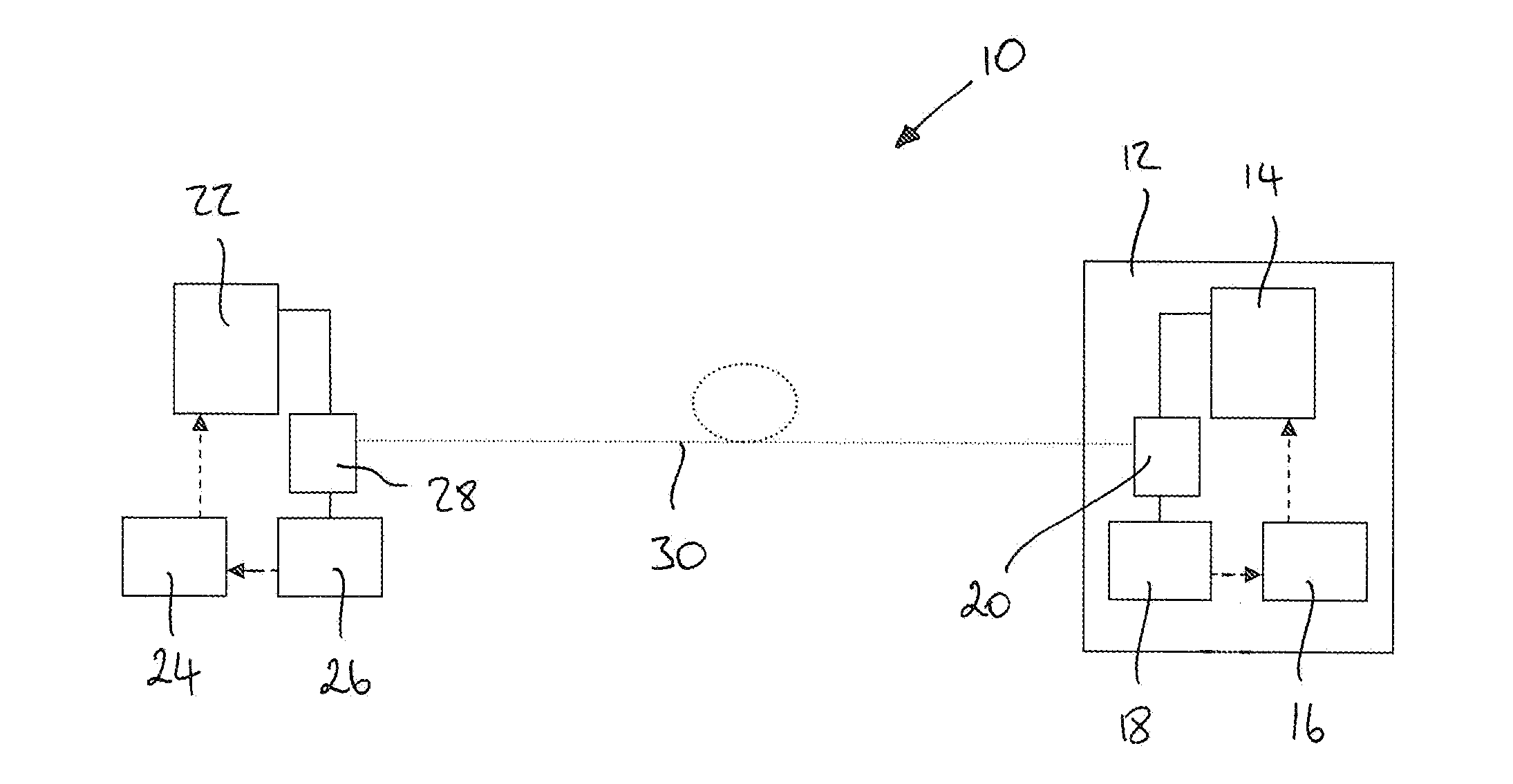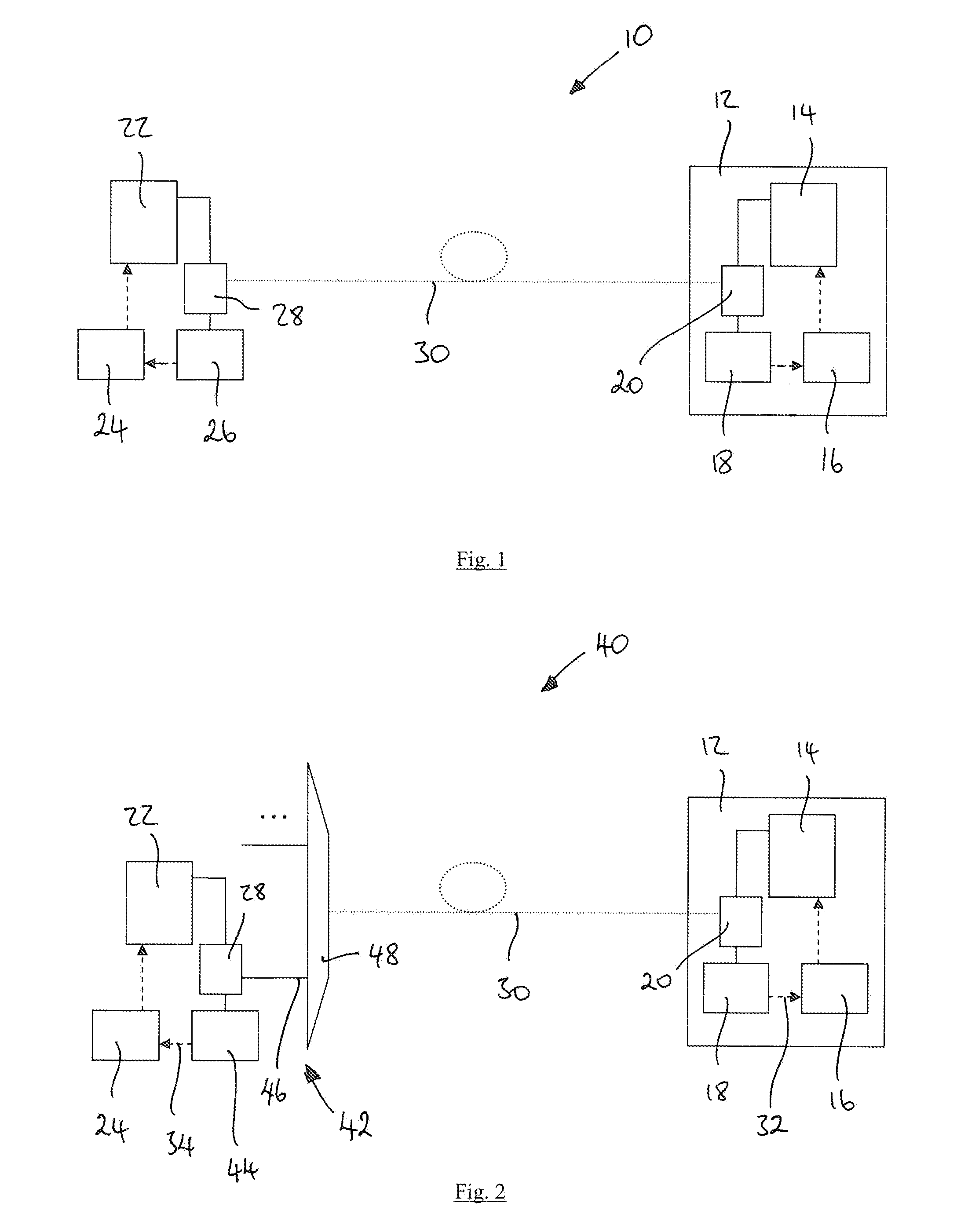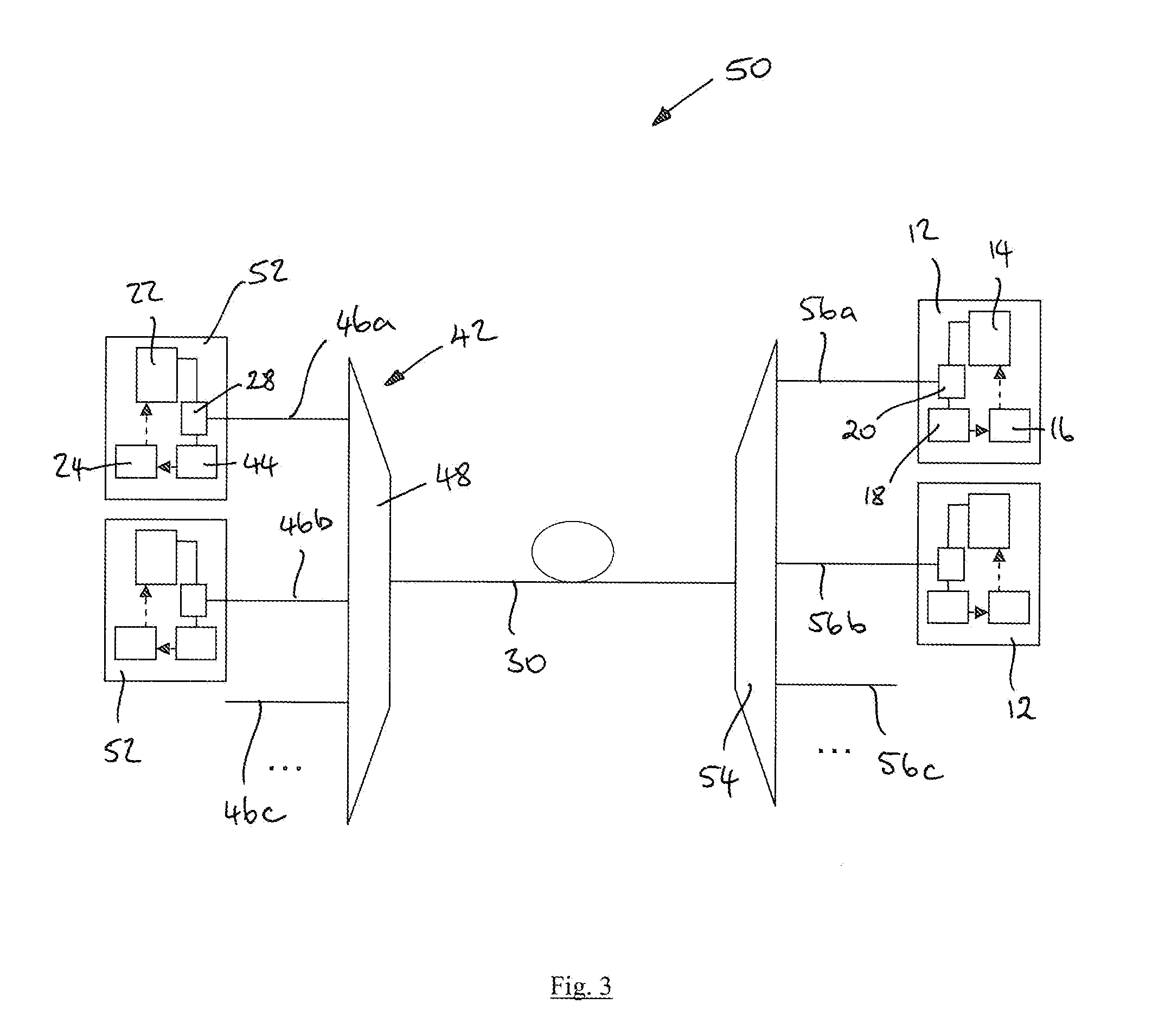Optical networks
a technology of optical networks and optical fibers, applied in the field of optical networks, can solve the problems of affecting the service life of the optical fiber, and requiring maintenan
- Summary
- Abstract
- Description
- Claims
- Application Information
AI Technical Summary
Benefits of technology
Problems solved by technology
Method used
Image
Examples
first embodiment
[0063]Referring to FIG. 1, the invention provides an optical network 10 comprising an optical network element 12. The optical network element 12 comprises a first optical transmitter 14, a first controller 16 and an optical receiver 18.
[0064]The optical network element 12 will typically be connected to an optical link 30, which is shown for reasons of clarity but which does not form part of this embodiment of the invention. The optical network element 12 further comprises a band-split filter 20 by which the optical link 30 is coupled to the first optical transmitter 14 and to the optical receiver 18.
[0065]The first optical transmitter 14 is arranged to generate and transmit a first optical signal. The first controller 16 is arranged to control the first optical transmitter 14 to generate and transmit the first optical signal at a wavelength selected from a pre-determined plurality of wavelengths, being the wavelengths of channels of the optical network 10. The optical receiver 18 is...
second embodiment
[0073]the invention, shown in FIG. 2, provides an optical network 40 which is substantially the same as the optical network 10 of the previous embodiment, with the following modifications. The same reference numbers are retained for corresponding features.
[0074]In this embodiment, the optical receiver apparatus 42 comprises an optical detector 44 coupled to an output port 46 of a wavelength selective router 48. The output port 46 is coupled to the optical detector 44 via the band-split filter 28. The wavelength selective router 48 is coupled, on its input side, to the optical link 30. As before, the optical link 30 is shown only for clarity and does not form part of this embodiment.
[0075]The first optical transmitter 14 comprises a wavelength tuneable laser and the second optical transmitter 22 comprises a fixed wavelength laser. Each of the optical receiver 18 and the optical detector 44 comprise wide band photodetectors.
[0076]In this example, the wavelength selective router 48 com...
third embodiment
[0083]Referring to FIG. 3, the invention provides an optical network 50 which is substantially the same as the optical network 40 of the previous embodiment, with the following modifications. The same reference numbers are retained for corresponding features.
[0084]In this embodiment, the optical network 50 comprises a plurality of optical network elements 12, each coupled to the optical link 30 via a second wavelength selective router 54, which in this example comprises a second AWG. Each optical network element 12 is connected to a respective output port 56a, 56b, 56c of the AWG 54.
[0085]As shown in FIG. 4, the AWG 54 is a cyclic AWG, a first wavelength range, λ1, λ2 to λN being used for downstream optical signals, i.e. the optical signals from the respective second optical transmitters 22, and a second wavelength range, λN+1 to λ2N, being used for upstream optical signals, namely the first optical signals. The two wavelength ranges are separated by the free spectral range (FSR) of...
PUM
| Property | Measurement | Unit |
|---|---|---|
| wavelengths | aaaaa | aaaaa |
| wavelength | aaaaa | aaaaa |
| threshold optical power | aaaaa | aaaaa |
Abstract
Description
Claims
Application Information
 Login to View More
Login to View More - R&D
- Intellectual Property
- Life Sciences
- Materials
- Tech Scout
- Unparalleled Data Quality
- Higher Quality Content
- 60% Fewer Hallucinations
Browse by: Latest US Patents, China's latest patents, Technical Efficacy Thesaurus, Application Domain, Technology Topic, Popular Technical Reports.
© 2025 PatSnap. All rights reserved.Legal|Privacy policy|Modern Slavery Act Transparency Statement|Sitemap|About US| Contact US: help@patsnap.com



